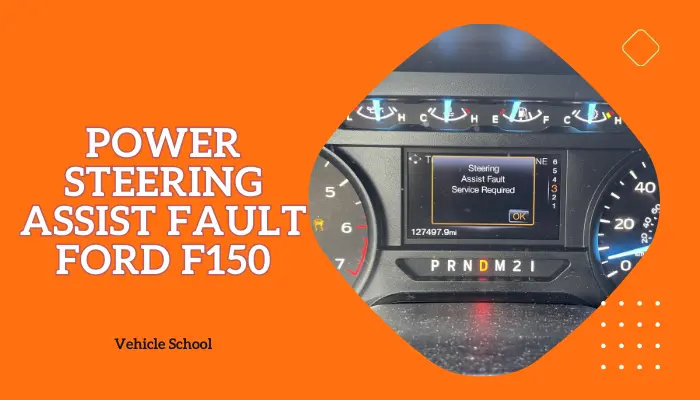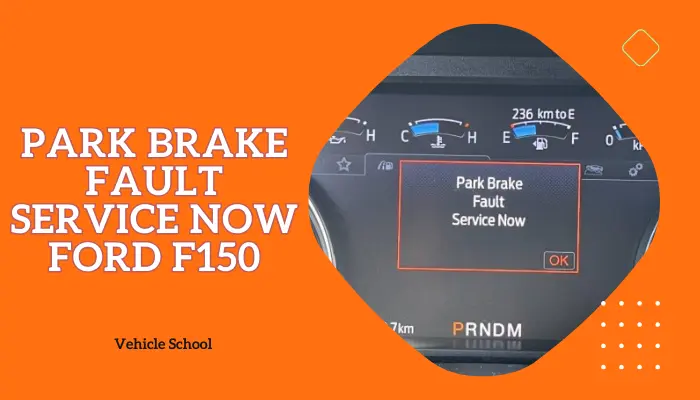Have you encountered the P0456 DTC on your F150? Don’t worry. To learn everything you can do to take care of it, you can check out the rest of this post.
What Causes The Code P0456 in Ford F150?
The code P0456 indicates there’s a leak in the evaporative emission system of your F150. It’s likely due to worn-out hoses or valves or a stuck-open valve letting out fuel vapor when it shouldn’t. To fix this, you’ll need to clean or replace those parts. You can do tests to find the exact problem and make sure everything’s back in place properly.

Let’s dig deeper into the reasons and step by step process to fix them.
1. EVAP Hoses or Fuel Tank Hoses Leaking
When the EVAP (Evaporative Emission Control System) or fuel tank hoses start to wear out, they can develop tiny cracks or become loose.
These hoses are supposed to carry fuel vapors from the tank to the EVAP canister. But if there’s a leak, those vapors escape into the air instead of being contained.
This disrupts the pressure in the system, and the truck’s computer notices something’s off, flagging it with a DTC P0456. You can check for this by eyeballing the hoses for damage or using smoke machines to find the exact leak spot.
2. Leaking Purge Valve or Vent Valve
The purge valve and vent valve are important parts of the EVAP system. They control how fuel vapors move between the fuel tank, EVAP canister, and engine intake manifold.
Sometimes, these valves can spring tiny leaks due to wear and tear, corrosion, or electrical issues. When they leak, fuel vapors escape, compromising the system’s pressure.
That’s when the truck’s computer throws a fit and logs a DTC P0456. You can check these valves with special tools and make sure they’re not damaged or malfunctioning.
3. EVAP Canister Leak
The EVAP canister stores fuel vapors and release them back into the engine when needed. But if it gets old or banged up, it can develop cracks or bad seals, letting those vapors leak out.
When this happens, the system can’t keep things under control, and the car’s computer picks up on the problem, tagging it with a DTC P0456.
To find signs of damage on the canister, do pressure tests to find leaks, and check if other parts like the purge valve and vent valve are doing their job right.
4. Stuck Open Purge Valve
Leaks aren’t the only issue. The purge valve in the EVAP system is responsible for controlling the flow of fuel vapors from the EVAP canister to the engine intake manifold.
Sometimes, this valve can get stuck open due to dirt, debris, and other obstructions. When it’s stuck open, it allows an excessive amount of fuel vapors to enter the engine when they’re not supposed to, disrupting the balance of the system.
This leads to abnormal pressure fluctuations, which the car’s computer diagnoses as a small leak and flags as a DTC P0456.
How To Fix P0456 DTC In Ford F150?
I’ll still share my experience on everything you can do without costly tools.
1. Clean The Purge Valve
First, ensure the valve is stuck open. Here’s how:
- Check for an engine light indicating EVAP system issues.
- Look out for vacuum leaks, rough idling, or performance problems.
- Monitor your Ford F150’s gas consumption.
- Notice difficulty starting the engine after refueling.
- Do an emissions test if necessary.
- Test the valve by blowing through it; easy airflow indicates a potential issue.
- Perform a vacuum test during engine startup to check for vacuum presence.
You might need to clean the valve if you notice a few of these symptoms. Here’s how to do so:
- Turn off the car and let the engine cool.
- Grab safety gear like glasses and gloves.
- Locate and remove the purge solenoid valve under the hood.
- Use pliers to disconnect tubes and unplug the connector.
- Spray cleaner into tubes and shake the valve to loosen debris.
- Let the valve air dry for 10 minutes.
- Reinstall the valve, reconnecting tubes and connector.
- For a deep clean, split valve halves, spray cleaner, grease o-rings, seal with epoxy, and let it cure for a day.
If you need visual help, you could check out this handy WikiHow article that describes the same process in more detail.
2. Do A Smoke Test
This one is more of a diagnosis, and its results will tell you if you can do the fix or not. If you’re still noticing the mentioned symptoms after cleaning, you should try this:
- Get an EVAP Emission tester.
- Remove the cover from the oil cap.
- Connect and check the smoke machine on the EVAP system.
- Find and disconnect the purge valve’s electrical connector and hoses.
- Use a power probe to test the purge valve by opening it and observing smoke.
- Check the vent solenoid near the EVAP canister, disconnect its connector, and optionally crimp its hose.
- Conduct a smoke test to check for leaks in the vent solenoid.
- Observe smoke emissions from various EVAP system parts, including around the gas cap and hoses.
- Use a mirror to inspect hard-to-reach areas, like on top of the gas tank.
- Monitor the smoke machine for pressure drops indicating leaks.
Online Auto Repair has a simple guide on how to do all this demonstrated in a video:
| Note: If it turns out the canister purge valve was still the problem, you can just swap it out. But if it’s another part of the EVAP system leaking, it’s best to head to a mechanic. Fixing those parts can get pretty complicated; simply patching leaks won’t cut it. |
3. Replace The Purge Valve
- First, unplug the electrical connector from the old purge valve/solenoid.
- Then, disconnect any vacuum lines attached to the old valve.
- Remove the old valve from its spot.
- Now, add a bit of white lithium grease to the O-rings of the new valve.
- Slide in the new valve, making sure it’s snug.
- Reconnect the electrical connector to the new valve.
- Don’t forget to hook up any vacuum lines again.
- If needed, twist the new valve clockwise to lock it.
- Use an OBD-II scanner to clear any trouble codes.
- Double-check to ensure no new codes have popped up.
- Finally, give the vehicle a test run to make sure everything’s working smoothly.
Here’s a look at the process from the same channel I mentioned earlier:
How much Will It cost You to fix code P0456?
Generally, replacements like purge valves, charcoal canisters, or gas caps might range from $100 to $500 for parts and diagnostic tools. But if bigger fixes are needed, like replacing the fuel tank or EVAP lines, costs could go higher, potentially reaching the thousands.
Is it safe to drive with a P0456 code?
Yeah, it’s usually safe, but it’s best to get it sorted out soon. It won’t mess with your driving right away, but ignoring it could make your truck put out more emissions and cause other problems down the road.
Ending Remarks
I know I said the problem won’t cause havoc right away, it’s best to tackle it ASAP and clear up the code. Ignoring it might mess with your truck’s long-term performance and dent its resale worth.
So go ahead and try out these fixes as soon as you’re done getting the tools I’ve mentioned in this guide. Good luck.






